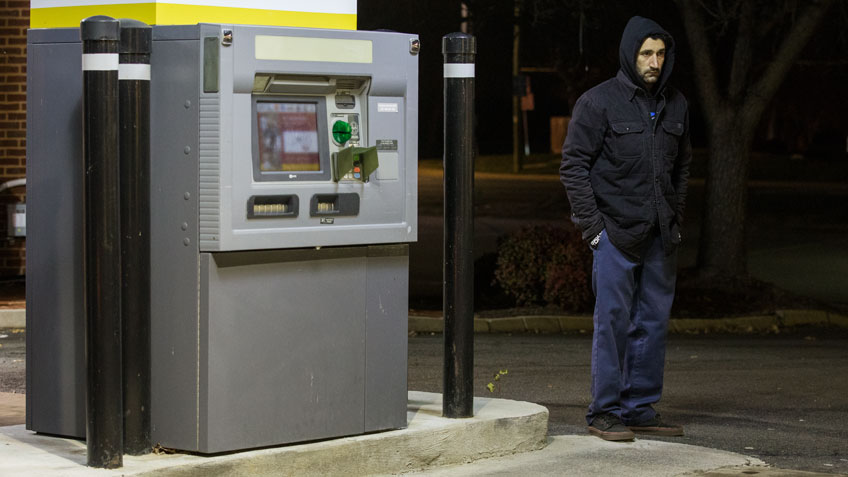
Maintaining one’s alertness involves keeping an eye on not only what’s happening, but also on any person or object that appears to be out of place.
In personal-defense classes, we talk to the students about awareness. Some instructors love to use the term “keep your head on a swivel.” Then, there is Col. Cooper’s color code that many people don’t understand, and others distort. But, most of those classes are about shooting and little time is spent talking about how to keep from shooting. Knowing what is going on around you—and seeing potential problems while time and distance are in your favor—will go a long way toward ensuring that you never have to shoot.
Take people, for instance. You want to be looking for people who just don’t fit into the surroundings. You might ask yourself why a bunch of guys dressed like gang members would need to be standing around in the parking lot of your city’s best restaurant at nighttime. You might be a bit suspicious of the person in front of the convenience store who is wearing an overcoat in the middle of August (hint: shotgun). And what about those strangers who are going door-to-door in your little neighborhood?
Mind you, you are not making judgments about these people. And nothing you’ve seen so far gives you cause to even speak harshly to them. It is merely noticing something out of the ordinary, so you are going to be cautious and observant until the matter is resolved one way or another.
When you are out and about, it is also a good idea to actually look at the people around you. Make eye contact with them. If you encounter someone who is already looking at you and quickly looks away when you make eye contact, that could be a clue that something is up.
Some time ago, a women’s magazine ran an article suggesting that women should not make eye contact with strangers. Their suggestion was that this might encourage unwanted attention. I find that concept misguided. Making eye contact lets others know that you are alert to what is going on around you. A crook might even think that you can more easily describe him to the police since you took the time to actually look at him. Making eye contact also exudes an air of confidence which suggests that you might not be a person to mess with.
We also need to get into the habit of actually looking, seeing and understanding what is going on around us. A good friend of mine—a retired cop, if that matters—accompanied his wife to the store not long ago. While his wife shopped, he just tagged along and watched people. Because of that, he saw a shoplifter busily filling his pockets. Looking further, he saw a store security guy already closing in on the thief. My friend’s response was to tell his wife, “Let’s go...and let’s go right now!” Once out in the car, he told his wife what he had seen. Because he was being observant, there was no need for them to have been a part of whatever altercation might have transpired.
You want to be looking for people who just don’t fit into the surroundings. You might ask yourself why a bunch of guys dressed like gang members would need to be standing around in the parking lot of your city’s best restaurant at nighttime.
How many times have you pulled up to a convenience store and rushed inside to make your purchase and be on your way? Why not, while still in the car, just take a moment to observe the people in the store to determine if everything seems OK? And, if it is not, we have time and space on our side to determine what to do about the problem—assuming, of course, that we consider realistic options.
The same cop buddy told about one of their officers who pulled up to such a store, off duty and with his young daughter in the car. Seeing an armed robbery in progress, the officer jumped out to engage the suspects, after having had his daughter crawl under the car for safety. In the gunfight that followed, there was only one fatality—the daughter under the car was killed by a ricochet. It is possible that, while the officer clearly spotted trouble, he did not give sufficient thought to what his best response could have been.
Finally, in considering what we are looking for from a defensive perspective, we have to get rid of the idea that our home is a safe haven. It is important to know what is going on outside and around that home. Strangers in the neighborhood, strange cars and strange happenings are not to be dismissed or ignored. I’m not suggesting that we play neighborhood vigilante, but we need to keep strangers under observation until we know what is going on. And we need to be ready to respond should the situation get bad.
Not long ago, my little dachshund gave me a valuable reminder. As happy as she is to get to go outside, when I open the door she only steps halfway out, pauses and looks all around before proceeding. I now remind myself to do the same thing.
So, what are we looking for? We are looking for people, things, and situations that just don’t fit. Not only are we looking, but we are actually seeing and evaluating. The quicker we see and evaluate, the more time we have to choose the proper response. And, if that response is to get away without firing a shot or having a confrontation of any kind, it’s all good.
































